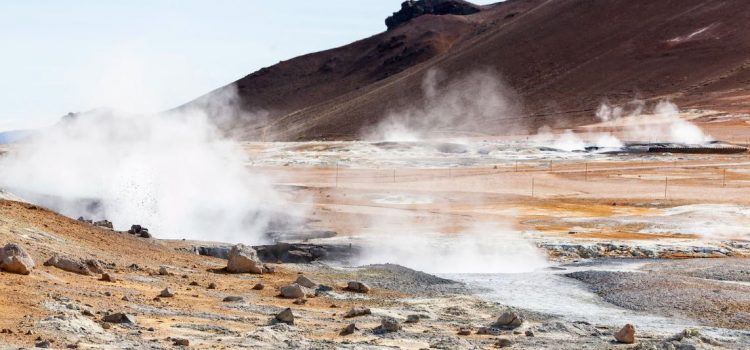
This is a free excerpt from one of Shortform’s Articles. We give you all the important information you need to know about current events and more.
Don't miss out on the whole story. Sign up for a free trial here .
Why aren’t we using more geothermal energy in the US? What are the benefits of switching to geothermal energy?
America is the world’s leading producer of geothermal energy—but that currently generates less than 1% of the nation’s power. The US hopes to see geothermal generate 8.5% of electricity by 2050, but the cost and accessibility to tap the resource pose significant challenges.
Below we’ll explore what geothermal energy is, its benefits and downsides, and prospects for its expansion.
Geothermal Energy
America is the top global producer of geothermal energy, a heat energy resource that proponents tout as reliable, sustainable, and environmentally friendly—but that generates less than 1% of the nation’s power. Given geothermal’s considerable benefits, why aren’t we relying more on geothermal energy in the US?
What Is Geothermal Energy?
The word “geothermal” means “heat from the earth” and refers to any system that moves heat inside the Earth to its surface. For example, volcanoes and hot rocks (without water) are geothermal.
A subset of geothermal is “hydrothermal,” a system in which water (in liquid or vapor state) helps transfer heat from inside the Earth to the surface. For example, hot springs and geysers.
Sourcing Geothermal Energy
There are three types of geothermal plants that convert geothermal (hydrothermal) heat to electricity :
- Dry steam: This type of plant taps steam from ground fractures and creates the most affordable geothermal energy. But future buildout of this type of plant is near impossible because only two known sources of natural steam exist in the US and one of them, Yellowstone National Park, is protected.
- Flash steam: This type of plant (the most cost-effective to build) pumps hot underground water into a surface level tank. That water is mixed with cooler water that rapidly turns (“flashes”) the liquid into vapor, which drives a turbine that activates a generator to create electricity.
- Binary cycle: These plants (the most likely to be developed in the future) cross hot water with a secondary, lower boiling point fluid that’s converted into a vapor, which turns a turbine.
These plants are typically located—and restricted to development in—Western US states, where geothermal is most easily accessed because three critical elements exist underground:
- Heat
- Fluid
- Permeability (the ability of water to flow freely through underground rock).
In parts of the US where these three elements don’t exist together (most of the country), it’s harder to tap and expand geothermal energy. For example, you can’t derive the heat from underground hot rocks without fluid and permeability. However, you can tap hot rocks’ heat by artificially creating reservoirs and an Enhanced Geothermal System (EGS).
Geothermal Benefits
Geothermal energy proponents say it comes with a host of benefits, including that it is:
- Environmentally friendly. Geothermal plants give off just one-sixth of the carbon dioxide emitted by natural-gas power plants.
- Renewable, reliable, and sustainable: The naturally replenishing resource isn’t compromised by weather conditions, making it readily available 24/7, 365 days a year, for the long-haul.
- A long-term cost saver. Once plants are built, geothermal offers savings of up to 80% compared to fossil fuels.
- Capable of providing 10% of US power needs if fully tapped, which would reduce fossil fuel reliance
Geothermal Expansion Barriers
Despite its upsides, significant obstacles limit geothermal expansion, including:
- High upfront costs. Site exploration and drilling are expensive—costing upwards of $7 million to build a single geothermal plant.
- Limited extraction sites. Geothermal plants can only be built where the resource is easily accessible.
- Permitting challenges. Ninety percent of natural geothermal resources are on federal land, and it can take seven to ten years to conduct requisite environmental assessments —and that doesn’t account for potential lawsuits.
- Earthquakes triggered by drilling. Some call EGSs “geothermal fracking,” because the process injects millions of gallons of water and chemicals into wells at high pressure to fracture deep, hot rock—which can trigger earthquakes. As geothermal energy extraction scales up, activists may push back out of fear that its use could cement broader fracking practices.
What’s Next
The US doesn’t have any EGS commercial power plants right now, but hopes that geothermal will generate 8.5% of America’s electricity by 2050.

Want to fast-track your learning? With Shortform, you’ll gain insights you won't find anywhere else .
Here's what you’ll get when you sign up for Shortform :
- Complicated ideas explained in simple and concise ways
- Smart analysis that connects what you’re reading to other key concepts
- Writing with zero fluff because we know how important your time is






